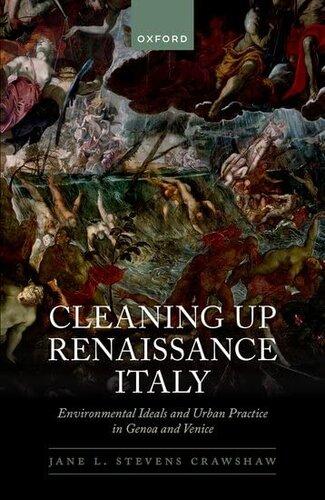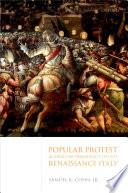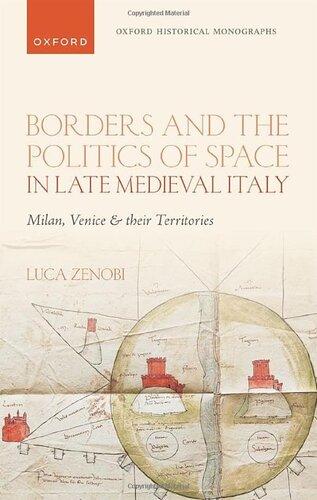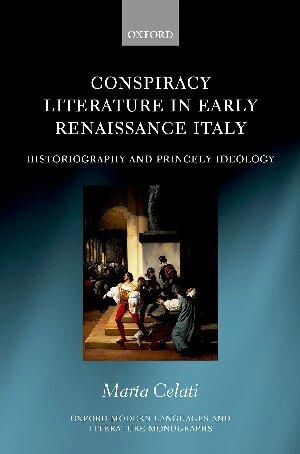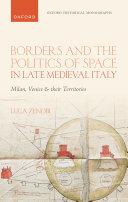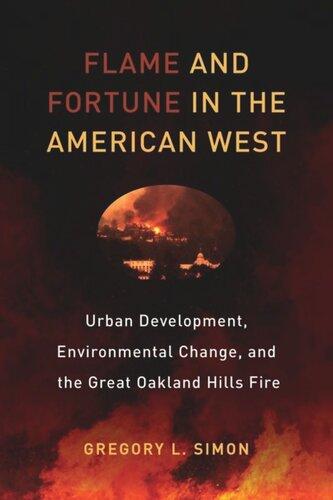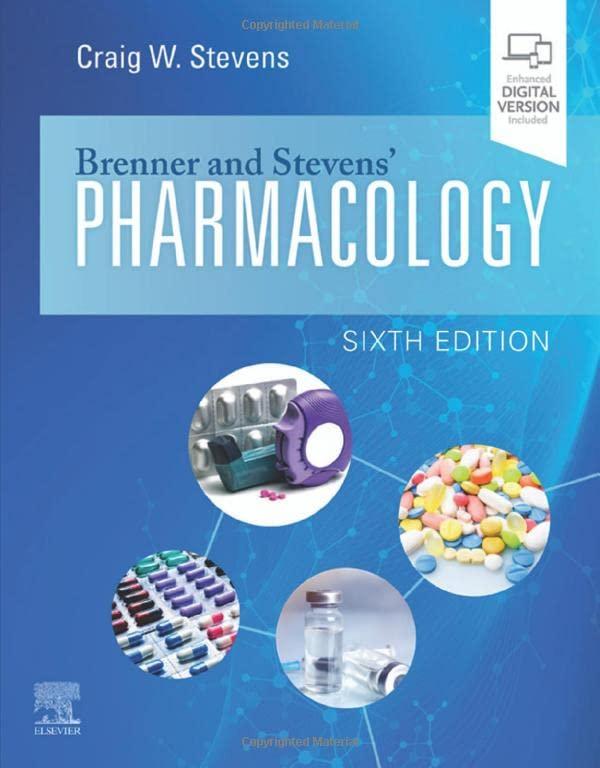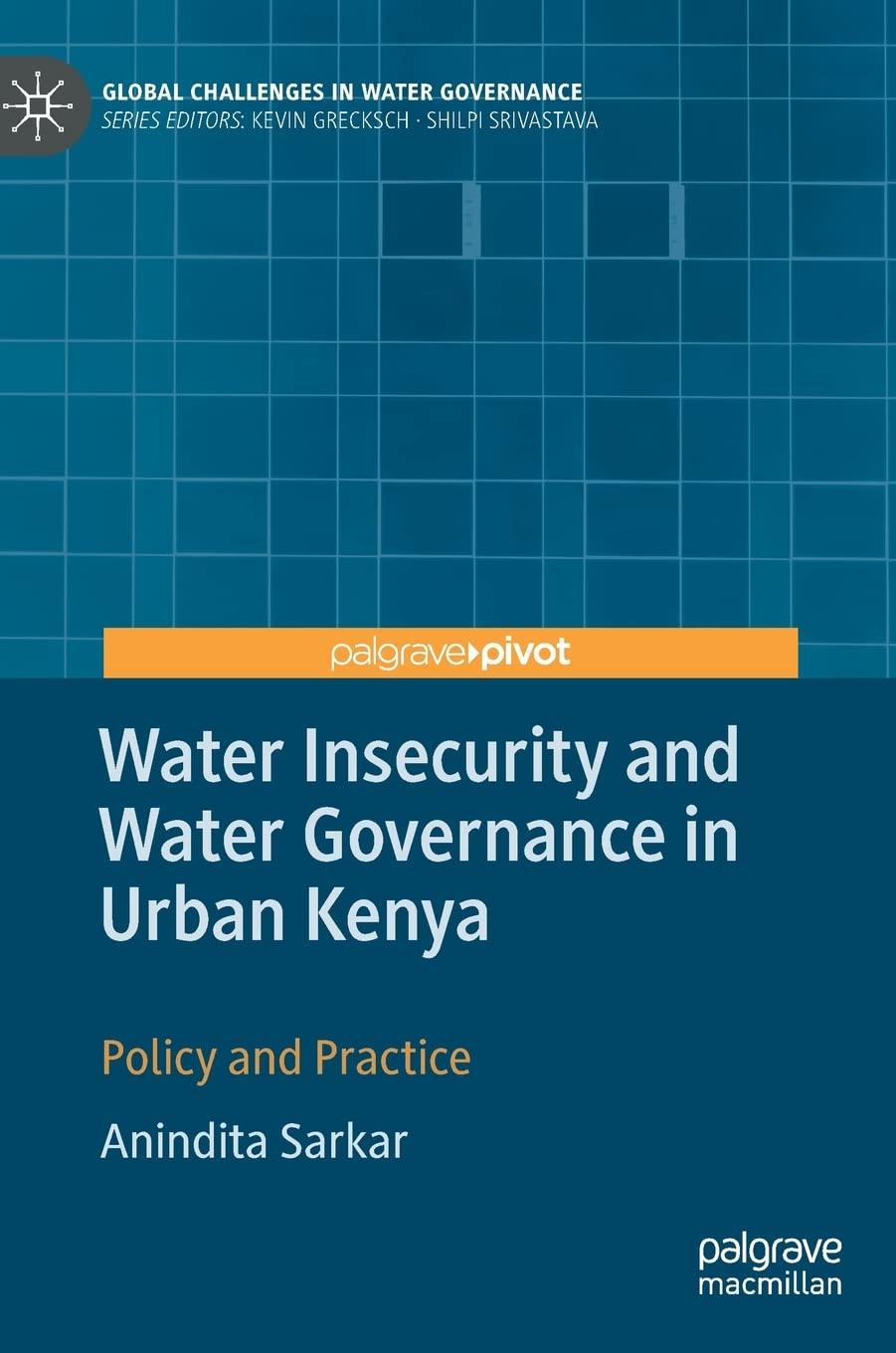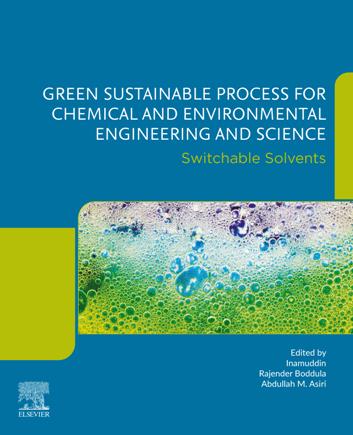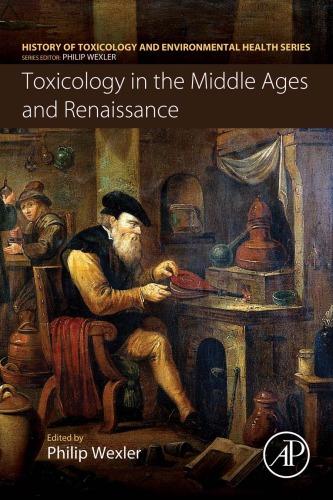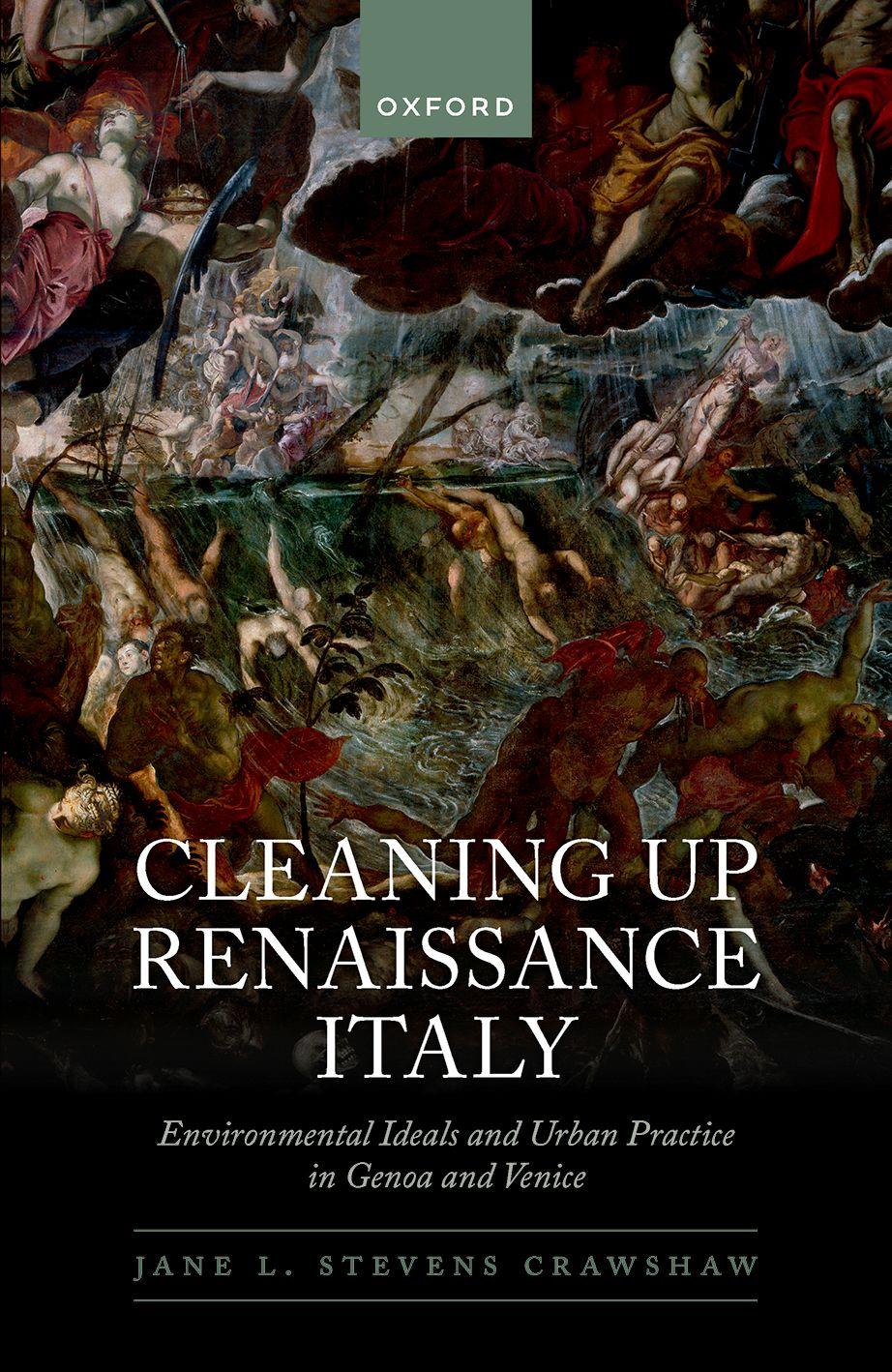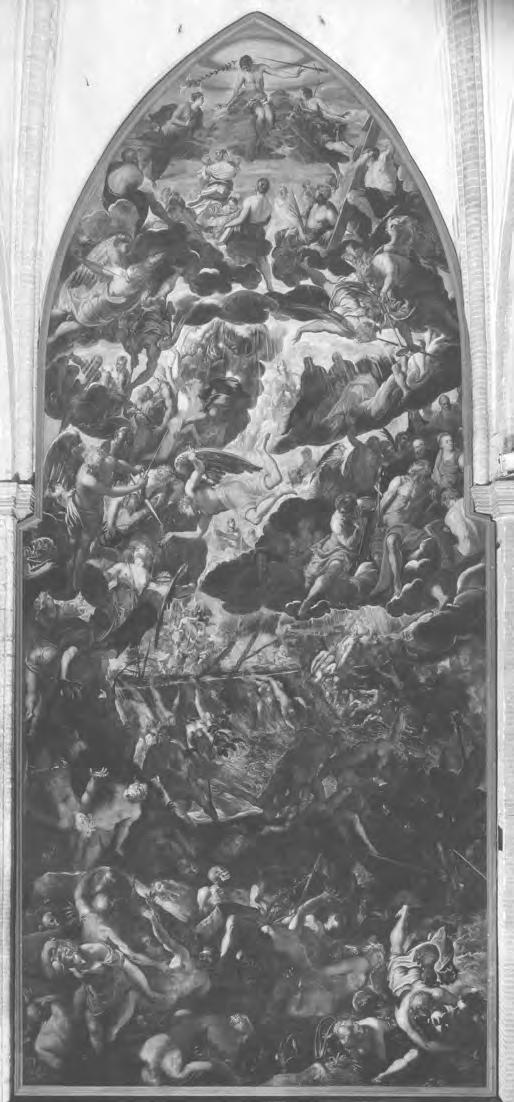Cleaning Italy: Environmental Ideals and Urban Practice in Genoa and Venice Dr Jane L. Stevens Crawshaw Visit to download the full and correct content document: https://ebookmass.com/product/cleaning-up-renaissance-italy-environmental-ideals-a nd-urban-practice-in-genoa-and-venice-dr-jane-l-stevens-crawshaw/
More products digital (pdf, epub, mobi) instant download maybe you interests ...
Popular Protest and Ideals of Democracy in Late Renaissance Italy Samuel K. Cohn
https://ebookmass.com/product/popular-protest-and-ideals-ofdemocracy-in-late-renaissance-italy-samuel-k-cohn/
Borders and the Politics of Space in Late Medieval Italy: Milan, Venice, and their Territories (Oxford Historical Monographs) Dr Luca Zenobi
https://ebookmass.com/product/borders-and-the-politics-of-spacein-late-medieval-italy-milan-venice-and-their-territories-oxfordhistorical-monographs-dr-luca-zenobi/
Conspiracy Literature in Early Renaissance Italy: Historiography and Princely Ideology Marta Celati
https://ebookmass.com/product/conspiracy-literature-in-earlyrenaissance-italy-historiography-and-princely-ideology-martacelati/
Borders and the Politics of Space in Late Medieval Italy: Milan, Venice, and their Territories Luca Zenobi
https://ebookmass.com/product/borders-and-the-politics-of-spacein-late-medieval-italy-milan-venice-and-their-territories-lucazenobi/
Flame and Fortune in the American West: Urban Development, Environmental Change, and the Great Oakland Hills Fire Gregory L. Simon
https://ebookmass.com/product/flame-and-fortune-in-the-americanwest-urban-development-environmental-change-and-the-greatoakland-hills-fire-gregory-l-simon/
Brenner and Stevens' Pharmacology 6th Edition Craig W.
Stevens
https://ebookmass.com/product/brenner-and-stevenspharmacology-6th-edition-craig-w-stevens/
Water Insecurity and Water Governance in Urban Kenya: Policy and Practice Anindita Sarkar
https://ebookmass.com/product/water-insecurity-and-watergovernance-in-urban-kenya-policy-and-practice-anindita-sarkar/
Green Sustainable Process for Chemical and Environmental Engineering and Science: Switchable Solvents Dr. Inamuddin
https://ebookmass.com/product/green-sustainable-process-forchemical-and-environmental-engineering-and-science-switchablesolvents-dr-inamuddin/
Toxicology in the Middle Ages and Renaissance Wexler
https://ebookmass.com/product/toxicology-in-the-middle-ages-andrenaissance-wexler/
CleaningUpRenaissanceItaly CleaningUp RenaissanceItaly EnvironmentalIdealsandUrban PracticeinGenoaandVenice JANEL.STEVENSCRAWSHAW GreatClarendonStreet,Oxford,OX26DP, UnitedKingdom
OxfordUniversityPressisadepartmentoftheUniversityofOxford. ItfurtherstheUniversity’sobjectiveofexcellenceinresearch,scholarship, andeducationbypublishingworldwide.Oxfordisaregisteredtrademarkof OxfordUniversityPressintheUKandincertainothercountries
©JaneL.StevensCrawshaw2023
Themoralrightsoftheauthorhavebeenasserted Allrightsreserved.Nopartofthispublicationmaybereproduced,storedin aretrievalsystem,ortransmitted,inanyformorbyanymeans,withoutthe priorpermissioninwritingofOxfordUniversityPress,orasexpresslypermitted bylaw,bylicenceorundertermsagreedwiththeappropriatereprographics rightsorganization.Enquiriesconcerningreproductionoutsidethescopeofthe aboveshouldbesenttotheRightsDepartment,OxfordUniversityPress,atthe addressabove
Youmustnotcirculatethisworkinanyotherform andyoumustimposethissameconditiononanyacquirer
PublishedintheUnitedStatesofAmericabyOxfordUniversityPress 198MadisonAvenue,NewYork,NY10016,UnitedStatesofAmerica
BritishLibraryCataloguinginPublicationData Dataavailable
LibraryofCongressControlNumber:2023932357
ISBN978–0–19–886743–2
DOI:10.1093/oso/9780198867432.001.0001
PrintedandboundintheUKby ClaysLtd,ElcografS.p.A.
LinkstothirdpartywebsitesareprovidedbyOxfordingoodfaithand forinformationonly.Oxforddisclaimsanyresponsibilityforthematerials containedinanythirdpartywebsitereferencedinthiswork.
ForAnnandRichardStevens Acknowledgements ThepilotresearchforthisbookwasfundedbyaLeverhulme/BritishAcademy SmallGrantin2012–13.Thisprovidedtheopportunitytoholdaconferencein Oxfordin2012andIamverygratefultoallattendeesandspeakersfortheir fascinatingcontributions.Ihadtheprivilegeofcontinuingmyresearchonthis topicaspartofanEarlyCareerFellowshipfundedbytheLeverhulmeTrust between2012and2017.AttheendofmyECRfellowship,Iwasappointedtoa permanentpostintheSchoolofHistory,PhilosophyandCultureatOxford BrookesUniversity.ThroughoutmytimethereIhavereceivedresearchsupport fromtheSchoolitselfandthecompletionofthisbookwouldnothavebeen possiblewithoutaUniversityResearchExcellenceAwardin2020.Mycolleagues atOxfordBrookeshavebeenasourceofinsight,encouragement,andsupport, particularlyMayaCorry,TomCrook,IanHolgate,SallyHolloway,Ioanna Iordanou,ErikLandis,MarikaLeino,GlenO’Hara,VivianeQuirke,Charles Robertson,andCassieWatson.JoanneBegiato,AlysaLevene,andAndrew SpicerhavesharedparticularwisdomandfriendshipforwhichIremainindebted.
Ihaveenjoyedconversationsandcollaborationswithmanyscholars,including audiencesatseminarsandconferences.IremaingratefultoAlexBamji,Janna Coomans,JuliaDeLancey,FilippodeVivo,GuyGeltner,FedericaGigante,Lydia Hamlett,JohnHenderson,MaryLaven,Marie-LouiseLeonard,ElaineLeong, GiuseppeMarcocci,CaroleRawcliffe,GervaseRosser,RosaSalzburg,Sharon Strocchia,EmanuelaVai,andClaireWeedafortheiradviceandfeedback.
Marie-Louiseprovidedgenerousassistanceinearly2021whentheCOVID-19 pandemicprohibitedmyreturntothecity.Thematerialforchapteronewas developedaspartofastimulatingGlobalCityprojectledbyEmmaHart.
ThearchivistsandstaffattheArchivioStoricodelComune,inGenoa,andthe ArchiviodiStatoinVenicewerecourteousandgenerouslysharedtheirprofessionalexpertise.AnnaandFedericoReprovidedhospitalityandfriendshipin Genoa,notonlytomebutalsotomyfamily.Theymadethecitysoonfeellikea homeawayfromhomeandseeingGenoathroughtheireyeswasanunexpected delightofthisproject.
CathrynSteeleandStephanieIrelandprovidedexcellentsupportatOxford UniversityPress.Theanonymousreaders ’ reportswereofconsiderablevalueand Iamgratefultothescholarswhoengagedsoconstructivelywiththepeerreview process.
IbeganmyresearchprojectonRenaissancecleanlinessaroundthesametime thatour firstchildwasborn.Sincethattime,Ihavelearnedagreatdealaboutdirt
andhygiene,aswellassicknessandhealth,bothpastandpresent.Mytwo childrenhavebeenasourceofunimaginablejoyduringtheresearchandwriting ofthisbook.Myhusbandhasbeensteadfastinhisloveandsupport: ‘afountainin awaste|awellofwaterinacountrydry,oranythingthat’shonestandgood|an eyethatmakesthewholeworldbright’.¹
Ihadalwaysplannedtodedicatethisbooktomyparentsbutcouldneverhave anticipatedhowmuchtheywoulddeserveit.Theyhaveconstantlyputthewellbeingandneedsofmyyoungfamilyabovetheirown.Iwillalwaysowethemmore thanIcanexpress.
¹EdwinMuir, ‘TheConfirmation’ inGabyMorgan(ed.), AYearofScottishPoems (London:Pan Macmillan,2020).
ListofIllustrations xi
ListofAbbreviations xiii Introduction1
1.ConstructingIdealsandPracticesinRenaissancePortCities26
PARTONE:THEEBBSANDFLOWSOFDAILYLIFE
2.ChannellingHealth:TheFlowoftheStreets51
3.PreservingPurity:TheSymbolicandPracticalRegulationofWater78
4.StemmingtheTide:InnovationandPurgation105
PARTTWO:BODIES:CONCEPTSOF BALANCEANDBLAME
5.WorkingwithWaste:Space,Reuse,andtheUrbanBody133
6.DealingwithDisasters:Environments,People,andPiety158 Conclusion:CorruptibleCities184
Bibliography 187 Index 205
ListofIllustrations I.1JacopoTintoretto, TheLastJudgement (1562–64).Venice,Churchofthe Madonnadell’Orto.Oiloncanvas.cm1450 590.©2020.Cameraphoto/ Scala,FlorenceandreproducedwithkindpermissionoftheUfficioBeni CulturalidelPatriarcatodiVenezia[Prot12.22.2702].2
I.2MapofVenicefromTommasoPorcacchi, L’isolepiufamosedelmondo (1572),©WellcomeCollection.Attribution4.0International(CCBY4.0).16
I.3Genoacityandport,1597.PaintingbyCristoforoGrassi,copyofanolder picturefromtheendofthe1400s,itshowsthenavalparadecommemorating theBattleofOtranto,1481.Genoa,MuseoNavalediPegli.©2020. DeAgostiniPictureLibrary/Scala,Florence.21
1.1PaintingofanIdealCity(c.1480–4).©TheWaltersArtMuseum,Baltimore (CC0license).27
1.2Sixteenth-centuryVenetianglasstileshowingDogeAndreaGrittifrom thecollectionoftheBritishMuseum.©TheTrusteesoftheBritishMuseum.44
4.1PaintingshowingthedredgingoftheGenoeseportin1545:Viewof GenoaPort.Genoa,MuseoNavalediPegli.©2014.DeAgostiniPicture Library/Scala,Florence.107
4.2PaintingshowingthedredgingoftheGenoeseportin1575,Dyonis Martens, ‘EscavazionedelfondomarinodelMondraccioaGenova’ Temperasuteladel1575.Genoa,GalataMuseodelMare.©2020. A.DagliOrti/Scala,Florence.108
4.3PaintingshowingthedredgingoftheGenoeseportin1597:Genoa harbour.Unknownartist.Genoa,MuseoNavalediPegli.©2014. DeAgostiniPictureLibrary/Scala,Florence.109
6.1Tilepanel,earthenware;TheVirginandChildbetweenSaintSebastian andSaintRoch.CentralItaly,probablyPesaro;about1500–1510©Victoria andAlbertMuseum,London.159
ListofAbbreviations Antichiscrittori R.CessiandN.Spada(eds), Antichiscrittorid’idraulicaveneta (Venice:PremiateOfficinegraficheCarloFerrari,1952)
ASCGArchivioStoricodelComune,Genoa
ASVArchiviodiStato,Venice b. busta (archivebundle)
BMCTheBibliotecadelMuseoCorrer,Venice
BMVTheBibliotecaMarciana,Venice
CiniFondazioneGiorgioCini,Venice
ComunThearchiveoftheVenetianProvveditoridelComunwhichhad responsibilityfortheregulationofpublicspace PaschettiBartolomeoPaschetti, Delconservarelasanità,etdelviverede’Genovesi (Genoa,1602)
PdCThearchiveoftheGenoesePadridelComunewhichhadwide-ranging responsibilitiesforinfrastructure,publicspace,andtheport rrecto
reg. registro (register)
RompiasioCaniato,Giovanni(ed.), Metodoinpraticadisommarioosia compilazionedelleleggi,terminazionietordiniappartenentiagl’illustrissimi eteccellentissimiCollegioeMagistratoalleacque,operadell’avvocato fiscale GiulioRompiasio (Venice:MinisteroperIbeniculturalieambientaliArchiviodiStato,1988).
SanitàThearchiveoftheProvveditoriallaSanitàinVenice(HealthOffice)
SEAThearchiveoftheVenetianSaviedesecutorialleacque(WaterOffice), responsibleforthemaintenanceofbodiesofwaterwithinand surroundingVenice
SecretaMMNTheseries Secreta,Materiamistenotabili intheVenetianStateArchive SenatoTerraCopiesoftheproposalsputtovoteintheVenetianSenate(themain decision-makingcouncilinVenice) vverso
Whocanforgetthosemomentswhensomethingthatseemsinanimate turnsouttobevitally,evendangerouslyalive?
AmitavGhosh, TheGreatDerangement
They...foundthelongBridgeofBerunainfrontofthem.Beforethey hadbeguntocrossit,however,upoutofthewatercameagreatwet, beardedhead,largerthanaman’s,crownedwithrushes.Itlookedat Aslanandoutofitsmouthadeepvoicecame.
‘Hail,Lord,’ itsaid. ‘Loosemychains.’
‘Whoonearthis that?’ whisperedSusan.
‘Ithinkit’stheriver-god,buthush,’ saidLucy.
‘Bacchus,’ saidAslan. ‘Deliverhimfromhischains.’
‘Thatmeansthebridge,Iexpect,’ thoughtLucy. Andsoitdid.
C.S.Lewis, PrinceCaspian
Introduction TheVenetianChurchoftheMadonnaoftheGarden(the Madonnadell’Orto)lies atthenorthernedgeofthedistrictofCannaregio,closetowherethebuiltenvironmentmeetsthelagoon.Amagnificentpaintingdominatesthewallofthechurch’ s chancel.JacopoTintoretto’ s LastJudgement (c.1562)isadistinctive,Venetian variationonacommonCatholic-Reformationtheme[ImageI.1].Here,the momentofjudgementarrivesasacascading flood.Thewaterssweepaway thelivingandthedead.Angelsliftthefaithfulfromthewaves.Divinetemporality andthedynamicsofsalvationarerealizedthroughtheforcesofthenaturalworld.
Thisisapowerfulimageforacitywhichwasrenownedforitsdistinctive construction ‘inthemiddleofthesea’.¹Venice’slocationhasattractedtheaweand affectionofobserversforcenturiesbutitalsoinflictsaheavyphysicaltollonthecity’ s infrastructure,fromtheintensestrainof floodstotheincrementalchangeswrought byhumidityandthemovementofthetides.²IntheperiodinwhichTintoretto’ s paintingwascreated,theconditionofthenaturalenvironmentwasimbuedwith additionalforceandmeaning.³Theenvironmentwasbelievedtoreflectandshape moralconditionsandconcerns.WhatthetopographicalsingularityofVenicemade evidentwastrueofcitiesacrosstheearlymodernworld:inordertounderstandthe strengthsandchallengesofaplace political,economic,religious,socialand medical itwasessentialtorecognizetheparticularitiesoftheenvironment.⁴
¹JohnEvelyncitedinJillStewardandAlexanderCowan, ‘Introduction’ in Thecityandthesenses: urbanculturesince1500 (London:Routledge,2016),p.4.
²ElizabethCrouzetPavan’ s ‘Sopraleacquesalse’:Espacesurbains,pouvoiretsociétéàVeniseàla fin duMoyenAge (2vols,Rome:IstitutostoricoitalianoperilMedioEvo,1992)consideredthewaysin whichtheenvironmentshapedspaceandformsofgovernmentinmedievalVenice.ErmannoOrlando’ s nuancedstudyofthelagoonfocuseduponpoliticaladministrationratherthanhealthandtheenvironment: AltreVenezie:IldogadovenezianoneisecoliXIIIeXIV(giurisdizione,territorio,giustiziae amministrazione)(Venice:Istitutovenetodiscienze,lettereedarti,2008).Seealsothe Antichiscrittori volumesandSalvatoreCiriacono, ‘Scrittorid’idraulicaepoliticadelleacque’ inGirolamoArnaldiand ManlioPastoreStocchi(eds), Storiadellaculturaveneta.DalprimoQuattrocentoalConciliodiTrento vol 3/II(Vicenza:N.Pozza,1980),pp.500–5.AnimportantworkontheVenetianenvironmentduringthe RenaissanceisKarlAppuhn, Aforestonthesea:environmentalexpertiseinRenaissanceVenice (Baltimore MA:JohnsHopkinsUniversityPress,2009).
³ClaireWeeda, ‘Cleanliness,civilityandthecityinmedievalidealsandscripts’ inCaroleRawcliffe andClaireWeeda(eds), PolicingtheenvironmentinpremodernEurope (Amsterdam:Amsterdam UniversityPress,2019),pp.39–68.
⁴ Asyet,AlexandraWalsham’sexplorationoftheinfluentialrelationshipbetweentheReformation andthelandscapeinBritainhasnotbeenmatchedfortheCatholicReformation.AlexandraWalsham, TheReformationofthelandscape:religion,identity,andmemoryinearlymodernBritainandIreland (Oxford:OxfordUniversityPress,2011).
CleaningUpRenaissanceItaly:EnvironmentalIdealsandUrbanPracticeinGenoaandVenice.JaneL.StevensCrawshaw, OxfordUniversityPress.©JaneL.StevensCrawshaw2023.DOI:10.1093/oso/9780198867432.003.0001
ImageI.1 JacopoTintoretto, TheLastJudgement (1562–64).Venice,Churchofthe Madonnadell’Orto.Oiloncanvas.cm1450 590.©2020.Cameraphoto/Scala, FlorenceandreproducedwithkindpermissionoftheUfficioBeniCulturalidel PatriarcatodiVenezia[Prot12.22.2702].
Theligaturesthatboundpeopletotheirbroadersettingsduringthepremodern periodwerethecorrespondencesbetweentheconstituentpartsofthehuman body(thefourhumours)andthoseofthenaturalworld(thefourelements).⁵ TheseconnectionslayattheheartoftheHippocraticcorpusofmedicalideasand hadbeeninfusedwithChristiantheology.⁶ Itwaswidelybelievedthatenvironmentscouldalterthenatureofthebody,shapingtemperaments,behavioursand health.⁷ Seafaringmen,forexample,weresaidtobe ‘liketheElementtheybelong to,muchgiventoloudnessandroaring’ . ⁸ Theseassociationspromptedgovernmentactivitiestomanageurbanspaceandnaturalenvironments;crucially,they endowedsuchworkwithsocialandsymbolicsignificance.Interventionssuchas thecleaningofstreets,thedredgingofportsordiversionofrivers,then,wereoften intendedtohavesocialorreligious,aswellasmedicalandenvironmental,effects.⁹ Itisthesemeasuresandtheirmeaningswhichlieattheheartofthisbook,which exploresthesocialandculturalhistoryofenvironmentalmanagementintwo Renaissanceports:GenoaandVenice.¹⁰
Therelevanceofthissubjectmatterisilluminatedinasecondpaintingin Venice’schurchofthe Madonnadell’Orto:Tintoretto’ s PresentationoftheVirgin attheTemple. AstheyoungVirginMary embodyingpurity ascendsornate stepstowardstheHighPriest,herpathislinedbypeople:youngandold,richand poor,maleandfemale.Inthevibrant,cosmopolitanportsofGenoaandVenice,
⁵ SandraCavalloandTessaStorey(eds), Conservinghealthinearlymodernculture:bodiesand environmentsinItalyandEngland (Manchester:ManchesterUniversityPress,2017)considersthenonnaturalsinabroadergeographicalandchronologicalcontext.
⁶ SimonaCohenhasremindedusthat ‘correspondencesestablishedbetweencategoriesofTime (days,seasons,months,ages),space(cardinalpoints,signsofthezodiacandplanetsascelestialand temporalimages),andmatter(elements,humours)wereconceivedasevidenceofthedivine’ in ‘The earlyRenaissancepersonificationofTimeandchangingconceptsoftemporality’ , RenaissanceStudies 14:3(2000),306–7.Thecorrespondencesthatconnectedthehumanbody(themicrocosm)withthe macrocosmoftheenvironmentorcreatedworldalsoincludedassociationswiththebodypolitic.Justas therewerefourhumoursandelements,therewerefourseasonsandtimesoftheday,fourpartsofthe knownworld(Africa,theAmericas,Asia,andEurope)aswellasfourcardinalvirtuesinPlato’sRepublic (wisdom,courage,moderation,andjustice).Therewerefurthercorrespondencesbetweenthethree principalorgansofthebody,threeagesofman,andtheChristianTrinityaswellassevenagesofman andsevenstagesinworldhistory.
⁷ NancyG.Siraisi, MedievalandRenaissancemedicine:anintroductiontoknowledgeandpractice (ChicagoIL:UniversityofChicagoPress,1990).
⁸ MandevillecitedinLottevandePol, Theburgherandthewhore:prostitutioninearlymodern Amsterdam (Oxford:OxfordUniversityPress,2011),p.157.
⁹ Theseconnectionsinacolonialcontextseethebriefmentionofthedrainageprojectof desagüe in MexicoCitydiscussedbyDanielNemser, ‘Triangulatingblackness:MexicoCity1612’ , MexicanStudies/ EstudiosMexicanos 33:3(2017),349.
¹
⁰ Similarcorrespondencescouldbefruitfullyexploredinrelationtotheeconomy.Regulationof marketplaceswasoftendrivenbypublichealthconsiderations.SeeDennisRomano, Marketsand marketplacesinmedievalItalyc.1100–1440 (NewHavenandLondon:YaleUniversityPress,2015).For valuableworkontheimpactoftheconceptofthemarketplaceonexpressionsofspiritualityand salvationseethestudiesbyGiacomoTodeschiniincluding IlPrezzodellasalvezza:lessicimedievalidel pensieroeconomico (Rome:NuovaItaliascientifica,1994).CarolineBruzeliusreferstotheimageryof Christasagoodmerchantin Preaching,buildingandburying:friarsinthemedievalcity (NewHaven andLondon:YaleUniversityPress,2014),p.127.
thestoriesofenvironmentalmanagementinvolveabroadcross-sectionof Renaissancesociety:fromcourtesanstostreetfoodsellersandarchitectsto canaldiggers.Althoughthesourcesonwhichthisstudyrestsarelargelyarchival, producedbyaminisculeproportionofthemalepopulation,theyrevealsomething oftheidealsandlivedexperiencesofafarbroadersocialcross-sectioninrelation tohealthandtheenvironment.Inhisreflectiononculturalhistoryaspolyphonic history,PeterBurkeportrayedthehistoryofcleanlinessasa ‘meetingpoint’ betweenstudiesofcodes,cultures,metaphorsandidentities,alongwiththe physicalobjectsofbodiesandenvironments.¹¹Itisthusexploredinthisbookas apointofintersectionbetweenideas,behavioursandregulation.
Alastlookatthechurchofthe Madonnadell’Orto revealsa finalidearelevant tothemanagementoftheenvironmentandhealth:thedynamicintersection betweentheunitsofthelocalityandthestate.¹²Manyoftheimagesonshowin thechurchdepictedorwereproducedbyinhabitantsoftheparish,including membersoftheTintorettofamilyandParisBordone.¹³Theseremainalongside representationsofimportantcivic figures,aswellasVenetiansaints,theportraits ofwhomwerecommissionedin1622bythecity’sPatriarchGiovanniTiepolo.
Thisinterplaybetweenthecircumstancesofthelocalityandtheintentionsof centralizinginstitutions(includingboththestateandtheCatholicChurch)isalso evidentifwemove165mileswest,toasecondchurchdedicatedtoOurLadyof theGarden(NostraSignoradell’Orto)intheseaportofChiavariontheLigurian coast.Here,intheearlydecadesoftheseventeenthcentury,acultdeveloped amongstthepoorinhabitantsofasuburb.Itgainedsuchmomentumthatthe ecclesiasticalandpoliticalauthoritieseventuallyauthorizedandformalizedthe devotions.¹⁴ Itshistoryremindsusthatlayersofauthorityandidentitycoexisted inRenaissanceterritories.Theconcernsandprioritiesofpeopleatlocal,civicand territoriallevelsometimescompeted.Notionsoforder,pietyorwellbeingcouldas readilyresultintensionascollaborativeenterprise.Communitiesalsousedthe structuresofenvironmentalmanagement,amongstothers,toresolvethechallengesofurbanlife bothsocialandphysical aswellasbeingsubjecttothe oversightofthesame.
¹¹PeterBurke, ‘Culturalhistoryaspolyphonichistory’ , ARBORCiencia,PensamientoyCultura CLXXXVI743(2010),479–86.SeealsotheworkofMarkJennerincluding ‘Doctoringtheenvironment withoutdoctors?PubliccleanlinessandenvironmentalgovernanceinearlymodernLondon’ , Storia urbana 112(2006),17–37.
¹²OnRenaissanceItalianstatesandkeyhistoriographicaldebatesanddevelopmentsseethe introductiontoAndreaGamberiniandIsabellaLazzarini, TheItalianRenaissanceState (Cambridge: CambridgeUniversityPress,2012).MichaelJ.Braddick, StateformationinearlymodernEngland c.1550–1700 (Cambridge:CambridgeUniversityPress,2000)providesavaluableseriesofperspectives onstateformationofthisperiod.ForthevitalityofthelocalityinVeniceseetheseriesofvolumes coordinatedbyGianmarioGuidarellientitled ‘ChurchesofVenice.Newresearchperspectives’
¹³TomNichols, Tintoretto:traditionandidentity (London:Reaktion,2015).
¹⁴ JaneGarnettandGervaseRosser, Spectacularmiracles:transformingimagesinItalyfromthe Renaissancetothepresent (London:Reaktion,2013),p.81.
Thisbookbridgesthehistoriesofurbanandnaturalspace,studyingcitiesin theirwidercontextsandhighlightingtheimportanceoftheenvironmentforthe wellbeingofearlymodernsociety.¹⁵ Theenvironmentalidealsreferredtointhe titleincludethosewhichrelatetobothbuiltandnaturalsettings.Thereferenceto urbanpracticesisnotintendedtosuggestthatthespatialunitofstudyhereis limitedbywallsorothercivicboundaries.Instead,thestudyisdirectedbywhat mightbetermedanurbangazeanddilatesuponthoseenvironmentalissuesand concernswhichwerebelievedtobepertinenttothehealthandwellbeingofthe city.Thedynamicsofidealandpracticeincentralsquaresandprominentstreets areconsideredalongsidespaceswhichweremorehiddenfromview:dark,narrow alleywaysandcapacioussubterraneandrains.¹⁶ Theseplacesformedavitalpartof theinfrastructureofhealth,whichwassocentraltotheexperienceoflifeinthe Renaissancecity,andthroughwhichurbancentreswereconnectedwiththeir widersettings.¹⁷
Thisperspectivehighlightsthenotableimportanceofthelocalityandregionin earlymodernenvironmentalthinking,evenatatimewhenHistorywasbeing writtenandrewritteninthecontextofexpandingunderstandingsoftheworld.¹⁸
InGenoaandVeniceexplanationsofenvironmentalchangesrarelyemployeda frameofreferenceasbroadasanoceanorcontinent.¹⁹ Instead,environmental problemsandsolutionsweresituatedinamorelimitedgeographicalarea.²⁰ The
¹⁵ Foradiscussiononthehistoriographyofurbanandenvironmentalhistoryoftheearlymodern periodseeMartinKnoll, ‘From “urbangap” tosocialmetabolism:theearlymoderncityin environmentalhistoryresearch’ inMartinKnollandReinholdReith(eds), Anenvironmentalhistory oftheearlymodernperiod:experimentsandperspectives (Zurich:Lit,2014),pp.45–50.Useful reflectionsonmethodologyandapproacharealsomadeinGeorgStöger, ‘Environmentalperspectives onpre-modernEuropeancities difficultiesandpossibilities’ inMartinKnollandReinholdReith (eds), Anenvironmentalhistory,pp.51–5.ExcellentintroductionsincludeSverkerSörlinandPaul Warde(eds), Nature’send:historyandtheenvironment (Basingstoke:PalgraveMacmillan,2009)and PaulStock(ed.), TheusesofspaceinearlymodernHistory (NewYorkNY:PalgraveMacmillan,2015). Ontheconceptof ‘ space ’ forhistoriansseePeterArnade,MarthaHowell,andWalterSimons, ‘Fertile spaces:theproductivityofurbanspaceinnorthernEurope’ , JournalofInterdisciplinaryHistory 32 (2002),515–28.
¹
⁶ FabrizioNevola, StreetlifeinRenaissanceItaly (NewHavenandLondon:YaleUniversityPress, 2020)hasexploredthisrelationshipbetweenpeopleandplaceinthebuiltenvironment.
¹
⁷ Thisstudyarguesforabroaddefinitionof ‘healthinfrastructure’ andnotestheongoingdebatein acontemporarycontextaboutan ‘artificialdividebetweenphysicalandhumaninfrastructure’ inBhav Jain,SimarS.Bajaj,andFatimaCodyStanford, ‘AllInfrastructureIsHealthInfrastructure’ , American JournalofPublicHealth 112:1(2022),24–6.
¹
⁸ GiuseppeMarcocci, Theglobeonpaper:writinghistoriesoftheworldinRenaissanceEuropeand theAmericas (Oxford:OxfordUniversityPress,2020).LydiaBarnett, Afterthe flood:imaginingthe globalenvironmentinearlymodernEurope (BaltimoreMA:JohnsHopkinsUniversityPress,2019).
¹
⁹ CornellFleischer, ‘AMediterraneanapocalypse:propheciesofempireinthe fifteenthand sixteenthcenturies’ , JournaloftheEconomicandSocialHistoryoftheOrient 61:1–2,18–90onthe interestingconnectionsbetweenMillenarianthoughtacrosstheMediterranean.AlisonBashford, DavidArmitage,andSujitSivasundaram(eds), Oceanichistories (Cambridge:CambridgeUniversity Press,2018).
²⁰ Futureresearchwouldbenefitfromanexplorationofthoseenvironmentalfeatures,suchasrivers whichtraversedpoliticalboundariesinordertoexploreissuesoflocalismandregionalismingreater depth.
themesexploredinthisbook,therefore,requireaspecificformof ‘connected history’,whichisdistinctlysituationalandsocial.²¹Knowledgeabouthealthandthe environmentcombinedsocial,religiousandethnicstereotypesandprejudices withmedicaltheoryandempiricalobservation.Thisargumentbuildsoninsights fromanthropology(particularlythewidely-influentialworkofMaryDouglas [1921–2007]).²²Hermethodologyforaligninghumanuniversalsandculturalphenomenahaspavedthewayforcomparativeapproachestohealthandwellbeing.²³
Whenwritersoftheperiodreferredtopublichealth(as salute ‘ commune ’ , ‘pubblica’ or ‘universale’),theyunderstoodthistoencompassabroad,interconnectedrangeofideasandinitiativesrelatingtobehaviour,moralityandsalubrity, includingbothpreventativeandcurativepractices.²⁴ Thislanguagewasfrequently invokedinVenice,alongsidethatof ‘comfort’ , ‘utility’ and ‘benefit’ tojustify environmentalinterventions.InGenoa,however,strikinglysimilarmeasures werejustifiedwithreferenceto ‘publiccomfort’ (commodopublico )andthe needtoprotectthecity’sport.Theconceptofpublichealthwasarticulatedless readilytojustifygovernmentinterventionsandagreaterrolewasacknowledged forindividuals,particularlymembersoftheelite,insparkingandsustaining activities.Hereweseethe ‘informalworld[ofItalianRenaissancepolitics which]facedtheinstitutions,formingwiththemthe unicum ofpolitics’.²⁵ The comparisonbetweenthesetwocity-stateshelpstoshiftourfocusawayfromthe dominanceofnotions(orlonghistories)ofpublichealthinrecentstudiesto recognizethateffortstopreservethehealthofcitiesmightnotrequirethefrequent deploymentofthistermoritsassociatedbureaucraticstructures(represented soofteninaRenaissanceItaliancontextbygovernmentHealthOffices).²⁶
²¹ForanimportantstudyofconnectedhistoryseeSanjaySubrahmanyam, ‘Connectedhistories: notestowardsareconfigurationofearlymodernEurasia’ , ModernAsianStudies 31:3(1997),735–62.
²²MaryDouglas, Purityanddanger:ananalysisofconceptsofpollutionandtaboo (London: Routledge,2002).
²³ForastimulatingdiscussionofDouglas’sideasandtheirimpactseeMarkBradley, ‘Approachesto pollutionandpropriety’ inMarkBradley(ed.), Rome,pollutionandpropriety:dirt,diseaseandhygiene intheEternalCityfromantiquitytomodernity (Cambridge:CambridgeUniversityPress,2012), pp.11–40.
²⁴ SeeSandraCavalloandTessaStorey, HealthylivinginlateRenaissanceItaly (Oxford:Oxford UniversityPress,2014);RobertaMucciarelli, ‘Igiene,saluteepubblicadecoronelMedioevo’ inRoberta Mucciarelli,LauraVigni,andDonatellaFabbri(eds), Vergognosaimmunditia:igienepubblicaeprivata aSienadalmedioevoall’etàcontemporanea (Siena:NIE,2000);JohnHenderson, TheRenaissance hospital:healingthebodyandhealingthesoul (NewHavenandLondon:YaleUniversityPress,2006); LauraMcGough, Gender,sexualityandsyphilisinearlymodernVenice:thediseasethatcametostay (Basingstoke:PalgraveMacmillan,2011);SamuelK.CohnJr., Culturesofplague:medicalthinkingat theendoftheRenaissance (Oxford:OxfordUniversityPress,2010)andGauvinBailey,PamelaJones, FrancoMormando,andThomasWorcester(eds), Hopeandhealing:paintinginItalyinatimeof plague1500–1800 (WorcesterMA:WorcesterArtMuseum,2005).
²⁵ AndreaGamberiniandIsabellaLazzarini(eds), TheItalianRenaissanceState,p.4.
²⁶ Traditionalaccounts,suchastheexcellentworkofCarloCipolla,recognizedtheearlydevelopmentofItalianhealthboardsandtheirbroadjurisdictionalresponsibilities.Forexample,CarloCipolla, PublichealthandthemedicalprofessionintheRenaissance (Cambridge:CambridgeUniversityPress, 1976).
Alternativeconceptsmightalsofacilitateeffortstoinstituteurbancleanlinessand collectivewellbeing.WhatemergesfromthisstudyofGenoaandVeniceisthe emphasisplacedonenvironmentalidealstojustifyurbanpracticesinrelationto health.
Anemphasisontheconditionofplaceshighlightsthehistorically-contingent natureoftheagencyofspace.Aspartofthe ‘spatialturn’ inhistoricalwriting, scholarshaverespondedtotheworkofMichelDeCerteauandHenriLefebvre, amongstothers,toexplorethedynamicsofspaceincitiesandonstreets.²⁷ Asyet, thesestudieshaveyettobealignedfullywiththemechanismsbywhichplacewas believedtoexertagencyovertime.²⁸ Formanycenturies,andacrossmany cultures,thisimpactwasexplainedusingthetenetsoftheHippocraticCorpus.²⁹ Inthisenduringframework,peopleweredirectlyshapedby(and,inturn,altered) theirurbanandnaturalenvironments. ‘Private’ issuesofbehaviourandcleanliness,therefore,wereofpublicsignificance.Afailuretofollowhealthmeasureswas morethananinconvenienceorannoyance:thenatureofneighboursandneighbourhoodscouldhavephysicalandmoralconsequences.³⁰
Thefocushereonthe fifteenthandsixteenthcenturiesisnotintendedto suggestthatthesecorrespondences,implicationsorpracticeswerenewinthe Renaissance.³¹Thereissignificantcontinuitytobeemphasizedintheenvironmentalandmedicalpracticesundertakenbetweentheperiodswhichprecedeand followtheoneunderconsiderationhere.³²Indeed,itishardlysurprisingto find
²⁷ BeatKüminandCornelieUsborne, ‘Athomeandintheworkplace:ahistoricalintroductionto the “spatialturn”’ , HistoryandTheory 52(2013),305–18.FortheearlymodernperiodseeMarcBoone andMarthaHowell(eds), ThepowerofspaceinlatemedievalandearlymodernEurope:thecitiesof Italy,NorthernFranceandtheLowCountries (Turnhout:Brepols,2013)andGeorgiaClarkeand FabrizioNevola(eds), ‘TheexperienceofthestreetinearlymodernItaly’ , ITattiStudiesintheItalian Renaissance 16:1/2(2013).
²
⁸ Theseassociationshaveattractedlessattentionfromearlymodernsocialandculturalhistorians thanscholarsofEnglishliteratureormedicalhistory.ExceptionsincludeSaraMigliettiandJohn Morgan(eds), Governingtheenvironmentintheearlymodernworld:theoryandpractice (London: Routledge,2017)andHannahNewton, ‘“Natureconcoctsandexpels”:theagentsandprocessesof recoveryfromdiseaseinearlymodernEngland’ , SocialHistoryofMedicine 28:3(2015),465–86.
²⁹ CharlesEstienneexplainedvariationsofsoilwithreferencetohumouralcombinations clays werecoldandmoist,sandshotanddryandallothersweremix.SeePaulWarde, Theinventionof sustainability:natureanddestinyc.1500–1870 (Cambridge:CambridgeUniversityPress,2018),p.45. FortherevivalofHippocraticideasinthesixteenthcenturyseeDavidCantor(ed.), Reinventing Hippocrates (Aldershot:Ashgate,2002).
³
⁰ SeeBarbaraRouse, ‘Nuisanceneighboursandpersistentpolluters:theurbancodeofbehaviourin latemedievalLondon’ inAndrewBrownandJanDumoly(eds), Medievalurbanculture (Turnhout: Brepols,2007),75–92;BronachC.KaneandSimonSandall, Theexperienceofneighbourhoodin medievalandearlymodernEurope (London:Routledge,2022);PaulaHohtiErichsen, Artisans, objects,andeverydaylifeinRenaissanceItaly:thematerialcultureofthemiddlingclass (Amsterdam: AmsterdamUniversityPress,2020),pp.70–1.
³¹KathleenDavis, Periodizationandsovereignty:howideasoffeudalismandsecularizationgovern thepoliticsoftime (PhiladelphiaPA:UniversityofPennsylvaniaPress,2008).
³²FortheprecedingperiodseeGuyGeltner, Theroadstohealth:infrastructureandurbanwellbeing inmedievalItaly (PhiladelphiaPA:UniversityofPennsylvaniaPress,2019)and ‘Healthscapinga medievalcity:Lucca’ s curiaviarum andthefutureofpublichealthhistory’ , UrbanHistory 40:3(2013), 395–415;CaroleRawcliffe, Urbanbodies:communalhealthinlatemedievalEnglishtownsandcities
repetitioninmeasures,giventhatcleaningisoftenongoingandrepetitivework. Whilstacknowledgingimportantcontinuities,archivalmaterialrevealsfour thingswhichwerespecificaboutthemanagementofhealthandtheenvironment duringtheRenaissance.First,thisworkwasundertakeninacontextofconsiderableepidemiologicalandenvironmentalchange.Europeenteredwhathasbeen termedtheLittleIceAgeandscholarsofepidemicdiseasehaverecognizedthat outbreaksofplague(andthenewdiseaseofthepox)intensifiedinfrequencyand severity.³³Thesechangeswerenotspeci fictoNorthernItaliancitiesbutwere combinedinthiscontextwiththesecondnotablechangeofthisperiod:significant demographicgrowthandurbanization.
GenoaandVenicewereamongstthemostpopulousEuropeancitiesduringthe fifteenthandsixteenthcenturies.Thesizeoftheformerincreasedfromapproximately51,000peoplein1531to67,000in1579:ariseofathirdoverthecourseof fiftyyears.Venice’spopulationin1563wasestimatedatjustover168,000,having risenfrom115,000attheturnofthesixteenthcentury,presentingalarger percentageincreasethanthatofGenoa.³⁴ Inneithercitywerethechangesin populationsizelinear.Successiveperiodsofnaturaldisasterpromptedconsiderable fluctuations.Overall,however,bothcitiesexperienceddemographicand urbangrowthduringthesixteenthcentury.Theidentificationofpopulation densityasadriverfortheintensi ficationofconcernsaboutcleanlinessisnota newidea.³⁵ Ithasnot,however,beenthetraditionalexplanationforthesemeasuresinRenaissanceItalywheredevelopmentshavebeenmorereadilyattributed toperceptionsofanadvancedformoftheItalianRenaissancestateortheshock causedbydemographiccrisessuchasrecurrentoutbreaksofplague.³ ⁶
(Woodbridge:TheBoydellPress,2013).JannaCoomans, Community,urbanhealthandthe environmentinthelatemedievalLowCountries (Cambridge:CambridgeUniversityPress,2021).See alsocontributionstoCaroleRawcliffeandClaireWeeda(eds), Policingtheurbanenvironment. For responsibilitiesinmedievalstatutesseeMiriRubin ‘Urbanstatutesandnewcomers’ in Citiesof strangers:makinglivesinmedievalEurope (Cambridge:CambridgeUniversityPress,2020),pp.33–5. FortheeighteenthcenturyseetheexcellentworkofMariaPiaDonatoandRenatoSansa.
³³OnthelittleiceageseeWolfgangBehringer, Aculturalhistoryofclimate, P.Camiller(trans) (Cambridge:CambridgeUniversityPress,2010).Onthechangingnatureofplagueinthepremodern periodseeJaneStevensCrawshaw, Plaguehospitals:publichealthforthecityinearlymodernVenice (Aldershot:Ashgate,2012),pp.9,240,and245.GuidoAlfani, Calamitiesandtheeconomyin RenaissanceItaly.TheGrandTouroftheHorsemenoftheApocalypse (Basingstoke:Palgrave Macmillan,2013).JohnHenderson, Florenceundersiege:survivingplagueinanearlymoderncity (LondonandNewHaven:YaleUniversityPress,2019).
³⁴ DanieleBeltrami, StoriadellapopolazionediVenezia (Padua:CEDAM,1954)estimates168,027 in1563butthisfelltojustover120,000followingtheplagueof1575–77andthenroseto134,871 in1581.
³⁵ ForthisargumentinrelationtotheDutchRepublicseeSirWilliamTemple, Observationsupon theUnitedProvincesoftheNetherlands (1672)citedinBasvanBavelandOscarGelderblom, ‘The economicoriginsofcleanlinessintheDutchGoldenAge’ , PastandPresent 205:1(2009),42.This importantarticleattributestherenownedcleanlinessoftheDutchGoldenAgetotheeconomicforces, includinghygienemeasuresessentialtothedairyindustryinahumidclimate.
³⁶ DouglasBiow, CultureofcleanlinessinRenaissanceItaly (IthicaNY:CornellUniversityPress, 2006),pp.11–13.
PopulationgrowthmeantthatbothGenoaandVeniceweresitesofconsiderable urbandevelopmentduringthesixteenthcentury,withitsattendanturbandisruption.Anumberofinitiativesthatweredesignedtoenhanceurbancontexts, includinghousingandinfrastructureprojects,placedastrainoncitiesbyusing significantquantitiesofwaterandgeneratingwasteonalargescale.³⁷ InGenoa,for example,thesignificantquantitiesofwaterrequiredforthebuildingtradeswas drawnfromcisternsaswellaslocalwellsandevendirectlyfromtheaqueduct.³⁸ ManyRenaissancecitiesexistedinastateof ‘semi-perpetualincompletion’ although projectscouldbecompletedwithremarkablecelerity.³⁹ Newbranchesofgovernmentemergedtooverseethemanagementofspecifictypesoflanduse,natural resourcesandelementsoftheenvironment.InGenoaandVenice,thegovernment bodiesforhealthandtheenvironment(whichextendedbeyondHealthOffices,as discussedbelow)alsoemployednewmechanisms(notablysystemsofprivileges)in ordertoencourageinnovationandthedevelopmentofnewtechnologybycitizens andforeignersaliketoaddressthepressingenvironmentalchallengesoftheday. Thisvolume,then,seekstocomplicatetheimageswhichwehaveofthe Renaissance conventionallycharacterizedasatimeofextraordinarypolitical andculturalachievementalongsideintenseurbanproblems. ⁴⁰ Astudyofhealth andtheenvironmentallowshistorianstobridgethesometimes-conflictingcharacterizationsofthegovernanceandsettingoftheseNorthernItaliancities,sinceit ispreciselybecauseofthedevelopedculturesofrecord-keepingthatweknow abouturbanandenvironmentalissues.⁴¹Thisvolumeconcentrateson community-levelmeasures,ratherthanthoserelatedtothecareofthehomeor thebody,tohighlightthreeconceptsthatinfluencedpremodernsocialand environmentalpolicies:balance, flowandcleanliness.⁴²
³⁷ KatherineRinne, ThewatersofRome:aqueducts,fountainsandthebirthoftheBaroquecity (LondonandNewHaven:YaleUniversityPress,2010), p.37.
³⁸ AnnaBoatoandAnnaDecri, ‘Archivedocumentsandbuildingorganisation’,p.383.
³⁹ ASCG,PdC,3-40(18June1470).AnnaBoatoandAnnaDecri, ‘Archivedocumentsandbuilding organization:anexamplefromthemodernage’ inS.Huerta(ed.) Proceedingsofthe firstinternational congressonconstructionhistory (Madrid,2003),p.382referstothereconstructioninstoneofthePonte CalviinGenoainjustover fivemonthsduringthe fifteenthcentury.
⁴⁰ PeterBurke, TheEuropeanRenaissance:centresandperipheries (Oxford:Blackwell,1998), Europe intheRenaissance:metamorphoses1400–1600 (Zürich:SwissNationalMuseum,2016)andJohn JeffriesMartin(ed.), TheRenaissance:Italyandabroad (London:Routledge,2003).
⁴¹FilippodeVivo,AndreaGuidi,andAlessandroSilvestri(eds), ‘Archivaltransformationsinearly modernEurope’ , EuropeanHistoryQuarterly 46(2016)andLiesbethCorens,KatePeters,and AlexandraWalsham(eds), ‘TheSocialHistoryoftheArchive:record-keepinginearlymodern Europe’ , PastandPresent 230suppl.11(2016).
⁴²Onthedistinctionbetweentheenvironmentandlandscape,wherebythelatteractsasarepository ofcollectivememory ‘widelycomparedwithaparchmentandpalimpsestaporoussurfaceuponwhich eachgenerationinscribesitsownvaluesandpreoccupationswithouteverbeingabletoeraseentirely thoseoftheprecedingone’ seeAlexandraWalsham, Thereformationofthelandscape, p.6.Onthe homeandthebodyseeSandraCavalloandTessaStorey, HealthylivinginlateRenaissanceItaly. Fora discussionofthe ‘constellationofassociations[between]purity,whitenessandliquidity’ inthecontext ofcolonialMexicoseeDanielNemser, ‘Triangulatingblackness’,p.359.
Balance,Flow,andCleanlinessinthePremodern EuropeanCity Environmentslayattheheartofcivicidentityinpremoderncities,oftencreating thedistinctivecontextfororiginstoriesandmiraclenarratives.⁴³InVenice,the lagoonwasseentoprotectthecityfromforeigninvasion(instarkcontrasttothe restoftheItalianpeninsula)untilthearrivalofNapoleonictroopsin1797.In Genoa,alludingtothevitalrolesplayedbytheport,theportareaitselfwas describedin1460asthe ‘foundation’ and,later, ‘thecrownofthiscity’ . ⁴⁴ The surroundingbreakwaterwasdeclaredapiousworkin1245andfrom1469all testatorswereaskedtoleavemoneyinitsfavour. ⁴⁵ Inasupplicationtothe governmentin1554thecityofGenoawithoutshipsintheportwasdescribed asa ‘bodywithoutasoul’ (corposensaanima).⁴⁶ Bothcitiesweretiedcloselytothe waterinpracticalandsymbolicways.
Earlymoderntheoriesabouttheelementsplacedtheminaspecifichierarchy, indescendingorderofnobility: fire,air,waterandearth.Theyweremaintainedin specificorder ‘togetherlink’dwithAdamantineChains’ . ⁴⁷ Theclosertheassociationbetweenwaterandcivicidentity,themoreopentocorruptionitwas consideredtobe.YetinwritingsonbothGenoaandVenice,aswithmany otherports,authorsextolledthevirtuesoftheirbodiesofwater.FynesMoryson [1566–1630]likenedthewateroftheVenetiancanalsto ‘thebloodthroughthe veinesofaman’sbody’ . ⁴⁸ Thishasbeenwidelycitedinrelationtotheroleplayed bythewaterwaysinsupplyingnutriment(throughtrade).Thecelebrationofthese bodiesofwaterderivedfromtheconfidencethatanyvulnerabilitiesinthenatural environmentcouldbeoffsetbythequalityofthebodypoliticanditspractices.⁴⁹
Elementsoftheenvironment likethe flowsofhumoursthroughthehuman body wereinconstantmovement:airand fireupwardsandwaterandearth downwards,aswellasprocessesoftransmutationbetweenthem.Somestudiesin thehistoryofmedicinehaveunderscoredthatthehumouralbodywasperceived asmuchintermsofitsliquidsand flowsasitsorgansandlimbs.⁵⁰ Health
⁴³ForasuccinctaccountoftheoriginsofthecityseeDeborahHoward, Thearchitecturalhistoryof Venice (NewHavenandLondon:YaleUniversityPress,2002),pp.2–3.SeealsoSimonSchama, The embarassmentofriches:aninterpretationofDutchcultureintheGoldenAge (London:Fontana,1987).
⁴⁴ ASCG,PdC1-71(16May1460)and13-10(3December1528).
⁴⁵ GiorgioDoriaandPaolaMassaPiergiovanni(eds), IlSistemaportualedellaRepubblicadiGenova: profiliorganizzativiepoliticagestionale(seccXII–XVIII) (Genoa:NellasededellaSocietàliguredistoria patria,1988),p.92.
⁴⁶ SupplicationfromGiulianoNassanoinASCG,PdC,22-83(29December1554).
⁴⁷ EdmundSpenser, ‘AnHymneinHonourofLove’ from Epithalamion (1596).
⁴⁸ FynesMoryson, AnItinerary (Amsterdam:DaCapoPress,1971),p.163.Inthesystemof correspondences,itwasairwhichcorrespondedwithblood;waterwastheequivalentofphlegm perhapsprovidingalessenticingsimile.
⁴⁹ CarrieE.Beneš (ed.), AcompaniontomedievalGenoa (Leiden:Brill,2018).
⁵⁰ KatherineCraikhasalsoemphasizedthattheidealstatesofmovementappliedalsotothe emotionsofthebody(ase-motions)inKatherineA.Craik, ‘Introduction’ inKatherineA.Craik
dependeduponuninhibited flowsaroundthebodyandseparatepathwaysfor distinctliquids. ⁵¹Returningtothisframeworkofmedicalunderstandingdraws ourattentionbeyondtheidentificationofparticularorganstoaninterestinthe flowsandchannelsbetweenthem.⁵²Ifwerecognizethecorrespondencesbetween manandthebuiltandnaturalenvironments,ittakesusnaturallytoaconcern with flowsandchannelsofmovementthroughthebodyofthecity.⁵³
Inordertomaintainthehealthofacity,itwasimperativetoregulatethequality and flowoftheair.Ahealthyenvironmentrequiredthat ‘l’aeresiaaperto’ (literally theairisopen),asVenetianHealthOfficeofficialsexpressed.⁵⁴ Thequalityofthe airwasessentialforthebalanceofthehumoursinthebody.⁵⁵ AstheGenoesedoctor BartolomeoPaschettiwrote,fromtheappropriatebalanceofhumoursfollowedgood habitsandmorals(lebuoneinclinazionietibuonihabitidell’animo).⁵⁶ Conversely, restrictedmovementofelements,materialsorpeoplewasasourceofconcern. Individualbodies,includingthoseoftheidlepoorwhofailedtosweatbecauseofa lackofexertionorwomenwhosemenstruationwasnotregular,mightgenerate anxiety.⁵⁷ Putrefactionanddiseasecouldderivefromstickiness,obstructionor stagnationwithinabodyorcity.⁵⁸ Balanceand flow,therefore,werecentraltonotions ofhealthybodies,aswellaslyingattherootofgoodbehaviourandmorality.⁵⁹
Environmentswereoftendistinguishedin,aswellasbetween,cities,which shapedthecharacterizationoflocalneighbourhoodsandtheirinhabitants.As HermanRoodenburghasexpressed: (ed.), Shakespeareandemotion (Cambridge:CambridgeUniversityPress,2020),p.1.SeealsoBarbara Duden, Thewomanbeneaththeskin:adoctor’spatientsineighteenth-centuryGermany (Cambridge MA:HarvardUniversityPress,1998).
⁵¹CaroleRawcliffe, Urbanbodies,pp.55–60.
⁵²FilippodeVivo, ‘Walkinginsixteenth-centuryVenice:mobilisingtheearlymoderncity’ , ITatti StudiesintheItalianRenaissance 19:1(2016),115–41.
⁵³KimberleySkelton(ed.), Earlymodernspacesinmotion:design,experienceandrhetoric (Amsterdam:AmsterdamUniversityPress,2020)identifiesashiftinideasinthesixteenthcentury fromboundedtocontinuousmotionasadesignprincipal.Medicalideasabout flowwerelong-standing andenduredthroughthisperiodalthoughtheyweregivenparticularprominenceinseventeenthcenturyiatromechanicalmedicine.
⁵⁴ RinaldoFulin(ed.), IdiariidiMarinSanudo (58vols,Venice,1879–1903),vol49[1October 1528–28February1529],p.137.ForSavonasee StatutipoliticidellacittadiSavona:conlesuerifforme etaddittionirimesseasuoluogo,tradottiinlinguqvolgare (Genoa,1610),pp.86–7.
⁵⁵ JoelKaye, Ahistoryofbalance1250–1375 (Cambridge:CambridgeUniversityPress,2014).Italso informedmany,broaderaspectsofearlymodernculture,includingconcernsaboutostentationand neglectinclothingandfashionasdiscussedinSusanNorth, Sweetandclean?Bodiesandclothesinearly modernEngland (Oxford:OxfordUniversityPress,2020),p.34.
⁵⁶ Paschetti,p.178.
⁵⁷ KevinSiena, Rottenbodies:classandcontagionineighteenth-centuryBritain (NewHavenand London:YaleUniversityPress,2019),p.43.On ‘improper flows ’ seealsoMaryFissell,Vernacular bodies:thepoliticsofreproductioninearlymodernEngland’ (Oxford:OxfordUniversityPress,2004).
⁵⁸ KevinSiena, Rottenbodies andAndrewWear, KnowledgeandpracticeinearlymodernEnglish medicine,1550–1680 (Cambridge:CambridgeUniversityPress,2000),pp.136–41.
⁵⁹ DouglasBiow, Thecultureofcleanliness.KathyStuart, Defiledtradesandsocialoutcasts:honor andritualpollutioninearlymodernGermany (Cambridge:CambridgeUniversityPress,1999). KatherineRinne, ThewatersofRome,p.7.
initsphysicalstructures(flatorhilly,havingspaciousornarrowstreetsand plazas,fewormanywaterways)eachtownhaditsownauditory,olfactoryor tactileidentity,oftenalreadyvaryingfromneighborhoodtoneighborhood,even fromstreettostreet.⁶⁰
ThedoctorPaschettidedicated fivepagestohisdiscussionofthequalityoftheair indifferentdistrictsofGenoabasedlargelyupontheirelevationandorientation.⁶¹ Healsoprovidedadviceastowhereresidentsmightbesttaketheirexerciseat differenttimesoftheyearinordertopreservetheirhealth.⁶²Observersrecognized thevariationacrossaswellasbetweenurbancentres.
Thisbook,then,meldssocial,urbanandenvironmentalhistorytoprovidea distinctframeworkforunderstandingenvironmentalmanagementandsocietal wellbeinginthisperiod.ItdemonstratestheconcernofRenaissancegovernments forthephysicalcleanlinessofurbanandnaturalenvironmentsandillustratesthat problemsintheenvironmentwere,inpart,activelycombattedbecauseof theintricaterelationshipwhichlinkedpeopleandplace.Socialharmonyand stabilitycouldaffecturbanandnaturalenvironmentsbutwerealsobelievedto beachievablethroughinterventionsinthesame.Suchinitiativesweredesignedto dealwithdirtandwastewiththeirvariousphysicalandmoralmanifestations.⁶³ Themanagementoftheseconcernsformedpartofawell-institutedgovernment throughbothregularmaintenanceactivitiesandexceptionalinterventionsin timesofneed.
TheStateofGenoaandVenice AsaVenetianSenatedecreemaintainedin1555,theconservationofhealthwas oneofthemostsalientandnecessaryprovisionsofthestate.⁶⁴ At firstglance,the RepublicsofGenoaandVeniceprovidestrikingexamplesofpoliticalcontinuityas twoofthethreeItalianRepublicswhichsurviveduntiltheinvasionofNapoleonat theendoftheeighteenthcentury.Beyondthis,however,theRepublicswere perceivedtobedistinctinboththeoryandpractice.⁶⁵ TheRepublicofthe Venetianswaswidelycelebratedforitsremarkablelongevityfromitsauspicious foundationon25March421(thefeastdayoftheAnnunciationoftheVirgin).⁶⁶
⁶⁰ HermanRoodenburg, ‘Introduction:thesensoryworldsoftheRenaissance’ in Aculturalhistory ofthesenses (London:BloomsburyAcademic,2016),p.13.
⁶¹Paschetti,124–8. ⁶²Paschetti,181.
⁶³RosieCoxetal., Dirt:the filthyrealityofeverydaylife (London:ProfileBooks,2011).
⁶⁴ ASV,SenatoTerrareg40,41v(22June1555).
⁶⁵ OnthedistinctivefeaturesoftheGenoesecivicgovernmentseeChristineShaw, ‘Principlesand practiceinthecivicgovernmentof fifteenth-centuryGenoa’ , RenaissanceQuarterly 58(2005),50–5.
⁶⁶ EdwardMuir, CivicritualinRenaissanceVenice (PrincetonNJ:PrincetonUniversityPress,1981), pp.65–103.
GiovanniBotero[c.1544–1617]attributedtheperceivedpoliticalstabilityof Veniceinparttothecity’snarrowstreetssincethe ‘easewithwhichbridges couldbeclosedoffguaranteedpeacebecausetheyfragmentedthecity’spopulationandmadeitdifficultforrebelstojointogether’ . ⁶⁷ Thecity’senvironment (urbanandnatural)wasanimportantaspectofitspoliticalmyth.⁶⁸ Therealities ofVenetianpoliticallifehavebeenshowntoincludeunrest,tensionsandcompetition.⁶⁹ Nevertheless,styledas laSerenissima,orthe ‘mostserene[Republic] ’ , thecity’shistoryhasbeencontrastedwiththatofearlyRenaissanceGenoa,where eventsweredecidedlymoretumultuous.AsChristineShawobserved:
TheRepublicofGenoawasrenownedforitspoliticalinstability,anditsreputationwasjustified.Between1300and1528,whentheconstitutionwasradically reformedundertheaegisofthegreatGenoesenavalcommander,AndreaDoria, ithasbeencalculatedthattherewereseventy-tworebellionsandchangesof regime.⁷⁰
Atleastintheory,after1528theRepublicofGenoaretaineditslibertyfrom foreigndomination.⁷¹PeterBurkehasobservedthat,unlikeinVenice,itwas nota ‘myth’ ofGenoawhichwasdevelopedinpoliticalliteraturebutrather an ‘anti-myth’ ⁷²AcomparisonbetweenthetwoRepublicsdrawsthelackof panegyrictraditioninGenoaintosharprelief.⁷³FactionalisminGenoesesociety andpoliticshasbeenfrequentlyobservedbyhistoriansfortheearlycommunal andpodestarialpoliticalsystems.⁷⁴ Astudyofgovernancebelowthehighest echelonsofpowercanneverthelessrevealcoherenceofcivicprioritiesanda consistencyofpracticeinthesphereofenvironmentalmanagementwhich enduredagainstthebackdropofpoliticalinstability.
⁶⁷ GiovanniBoterocitedinFilippodeVivo, ‘Walkinginsixteenth-centuryVenice’,p.122.
⁶⁸ RobertFinlay, ‘TheImmortalRepublic:ThemythofVeniceduringtheItalianWars (1494–1530)’ , SixteenthCenturyJournal 30:4(1999),931–44.
⁶⁹ RobertFinlay, PoliticsinRenaissanceVenice (NewBrunswickNJ:RutgersUniversityPress,1980).
⁷⁰ ChristineShaw, ‘Genoa’ inAndreaGamberiniandIsabellaLazzarini, TheItalianRenaissance State,p.220.
⁷¹TheinfluenceofHabsburgmonarchyincreasinglyintenselyfeltwasnotedbyFynesMoryson citedinBrianPullan, RichandpoorinRenaissanceVenice:thesocialinstitutionsofaCatholicstate,to 1620 (Oxford:Blackwell,1971),p.4.
⁷²PeterBurke, ‘PublicandprivatespheresinlateRenaissanceGenoa’ , VarietiesofCulturalHistory (Cambridge:CambridgeUniversityPress,1997),pp.111–23.SeealsoCarloBitossi, Ilgovernodei magnifici:patriziatoepoliticaaGenovafraCinqueeSeicento (Genoa:ECIG,1990)
⁷³D.Galassi,M.P.Rota,andA.ScrivanoonAgostinoGiustinianiin Popolazioneeinsediamentoin LiguriasecondolatestimonianzadiAgostinoGiustiniani (Florence:L.S.Olschki,1979)particularly pp.9–11.
⁷⁴ CarrieE.Beneš, ‘Civicidentity’ in AcompaniontomedievalGenoa,editedbyCarrieE.Beneš, pp.193–217.SeealsoreflectionsoninvasionsofGenoaandchangesofpoliticalallegianceinElizabeth Reid, ‘Femalerepresentation,genderandviolenceintheceremonialentriesoftheItalianWars’ , RenaissanceStudies,36:5(2022),750–68.
